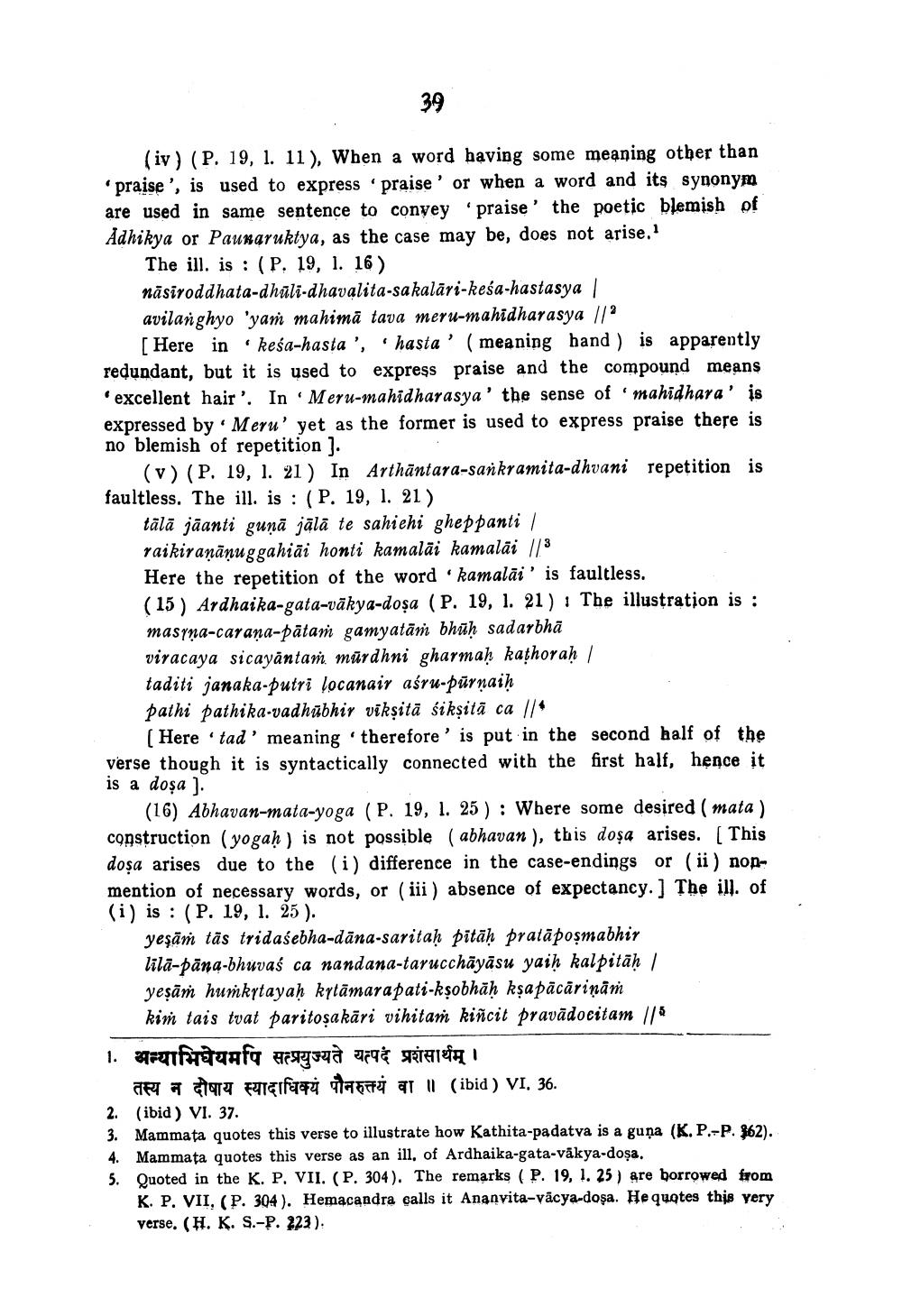________________ 39 (iv) (P. 19, 1. 11), When a word having some meaning other than praise', is used to express praise' or when a word and its synonym are used in same sentence to convey praise' the poetic blemish of Adhikya or Pausaruktya, as the case may be, does not arise. The ill. is : (P. 19, I. 16 ) nasiroddhata-dhuli-dhavalita-sakalari-kesa-hastasya avilanghyo 'yam mahima tava meru-mahidharasya //? [Here in kesa-hasta', hasta" (meaning hand ) is apparently redundant, but it is used to express praise and the compound means excellent hair'. In Meru-mahidharasya' the sense of 'mahidhara' is expressed by * Meru' yet as the former is used to express praise there is no blemish of repetition ]. (v) (P. 19, 1. 21) In Arthantara-sankramita-dhvani repetition is faultless. The ill. is : (P. 19, 1. 21) tala jaanti guna jala te sahiehi gheppanti / raikirananuggahioi honti kamalai kamalai 1/3 Here the repetition of the word kamalai' is faultless. ( 15 ) Ardhaika-gata-vakya-dosa (P. 19, 1. 21 ) * The illustration is : masyna-carana-patam gamyatam bhuh sadarbha viracaya sicayantam murdhni gharmah kathorah / taditi janaka-putri Locanair asru-purnaih pathi pathika-vadhubhir viksita siksita ca // ( Here 'tad' meaning therefore' is put in the second half of the verse though it is syntactically connected with the first half, hence it is a dosa ). (16) Abhavan-mata-yoga (P. 19, I. 25 ) : Where some desired ( mata) construction (yogah) is not possible (abhavan ), this dosa arises. (This dosa arises due to the (i) difference in the case-endings or (ii) nonmention of necessary words, or (iii) absence of expectancy. ] The ill. of (i) is : (P. 19, 1. 25 ). yesam tas tridasebha-dana-saritah pitah prataposmabhir lila-pana-bhuvas ca nandana-tarucchayasu yaih kalpitah / yesam humkytayah kytamarapati-ksobhah ksapacarinam kim tais tvat paritosakari vihitam kincit pravadocitam // 1. अन्याभिधेयमपि सत्प्रयुज्यते यत्पदै प्रशंसार्थम् / are a r facilitatori al (ibid) VI. 36. 2. (ibid) VI. 37. 3. Mammata quotes this verse to illustrate how Kathita-padatva is a guna (K.P.-P. 362). 4. Mammata quotes this verse as an ill, of Ardhaika-gata-vakya-dosa. 5. Quoted in the K. P. VII. (P. 304). The remarks (P. 19, 1. 25) are borrowed from K P. VII, (P. 304). Hemacandra calls it Ananvita-vacya-dosa. He quotes this yery verse. (H. K. S.-P. 223).




